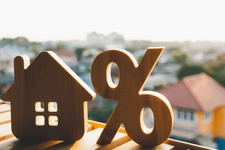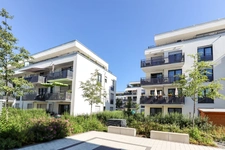As we head into fall 2025, the French real estate market is showing positive signs, with stabilizing mortgage rates and a partial recovery in transactions. After a summer marked by renewed activity, buyers and sellers are closely watching early September trends to adjust their plans. In this article, we analyze the state of the property market in September 2025: current prices, transaction volumes, financing conditions, short-term prospects, and offer practical advice for both buyers and sellers.
A dynamic autumn following an encouraging summer
After several months of caution on the French property market, September 2025 brings a sense of optimism. Buoyed by a slight upturn over the summer, this momentum is confirmed in the first weeks of September, with positive indicators seen across both new-build and existing home segments. Buyers are returning, sales are picking up, and supply is gradually improving. Let's take a closer look at the factors behind this renewed energy as we begin the fall season.
A rebound in property sales during summer 2025
The months of July and August 2025 gave the French real estate market some breathing space. After a cautious first half of the year—due to hesitant households and conservative lending policies—figures published at the end of August by several national networks, including Optimhome, show a 30% increase in sales compared to the spring.
Several factors explain this rebound: the stabilization of mortgage rates since June, more reasonable pricing in some regions, and renewed buyer confidence. This recovery in demand was accompanied by shorter selling times in dynamic areas, especially in regional cities (such as Nantes, Bordeaux, and Lyon) and sought-after suburban zones.
The most responsive buyers were able to negotiate attractive discounts in July and August, particularly on properties that had been listed for several months. September is confirming this trend: project-minded buyers are back, well-informed, ready to visit, and make offers.
An increase in existing housing supply in September 2025
Another defining feature of this back-to-school season is the noticeable rise in listings of existing homes. Many owners who had postponed selling during the peak interest rate period are now returning to the market with properties ready to be listed.
This phenomenon stems from a combination of factors:
Sellers reassured by a more stable market
Clearer visibility on price levels
A desire to benefit from renewed demand under favorable conditions
As a result, the inventory of available properties is increasing, especially in standard residential markets. This fresh wave of supply eases the tension that had persisted for over a year in certain areas. It gives buyers more choice and reignites competition among sellers—potentially encouraging realistic price adjustments.
In major urban areas, the diversity of listings is also enabling families, first-time buyers, and investors to better align properties with their needs and budgets. Fall 2025 thus begins with a healthier balance between supply and demand, which bodes well for the remainder of Q4.
What are the key trends in the French real estate market in September 2025?
Analyzing market trends at the start of fall helps us better understand the national and local dynamics at play. Following a gradual summer recovery, the French property market appears to be entering a phase of price stabilization, with regional differences depending on property type and buyer profiles. The climate remains cautious, but the signals are more encouraging than they were in September 2024.
Property prices in September 2025: overall stability with local contrasts
Across France, property prices in September 2025 remain generally stable compared to August. According to field reports from the Optimhome network and local notarial indicators, prices for existing apartments and houses remain moderate in most areas, following the sharp declines seen in early 2024 and early 2025.
Major cities like Paris, Lyon, Bordeaux, and Lille are seeing prices hold steady or even slightly increase, supported by renewed demand in well-connected neighborhoods. In the Île-de-France region, buyer interest is shifting toward less competitive zones (such as outer suburbs or departments like Seine-et-Marne and Essonne), supporting a slight revaluation of transaction prices.
Conversely, some rural or secondary markets still suffer from oversupply or lack of demand. Selling times remain long, particularly for homes needing renovation or poorly located properties. In regions like the French Riviera or Provence-Alpes, tourism-driven markets remain attractive, but buyers are negotiating harder.
Overall, there is a growing disconnect between asking and actual sale prices. Buyers are better informed, more cautious about financing conditions, and more likely to make lower offers than the listed price.
A Recovering but Still Selective Demand in the French Property Market
Back-to-school season 2025 also marks the gradual return of buyers, particularly first-time buyers and some rental investors. This renewed interest is driven by the stabilization of interest rates, better visibility on the property market’s direction, and the desire to act before a possible price increase in the coming months.
First-time buyers are particularly active in suburban areas, where real estate purchasing power remains within reach. They are targeting move-in-ready properties close to transport and employment hubs. A return to professional stability and a personal down payment are once again becoming key conditions for access to credit for this group.
On the investor side, selectivity is increasing: they focus on properties with good rental yields in tight rental markets, or those with high medium-term appreciation potential. The market’s ability to attract such profiles with suitable investment opportunities will be a key factor in the coming months.
Finally, housing construction remains sluggish in many regions, reinforcing the attractiveness of the existing home market and potentially impacting the supply-demand balance in the medium term. This situation could lead to a shortage of available properties in some dynamic towns by the end of 2025.
In conclusion, as autumn approaches, the French real estate market presents a contrasted picture: dynamic in active zones, still fragile elsewhere, but clearly out of the summer pause. The trend is toward a moderate recovery, supported by a better-calibrated supply and a more confident demand.
What Is the State of Real Estate Financing in September 2025?
The mortgage market continues its stabilization trajectory initiated in the spring. As of this September 2025, interest rates remain at moderate levels, after a sharp increase in 2024. For borrowers, conditions are more favorable than last year: financing terms have eased slightly, while banks are gradually returning to a more active lending policy.
While caution still prevails, the signals are positive for buyers with real estate projects.
Stable and Competitive Average Rates in September
According to the updated mortgage rate barometer (end of August 2025), average interest rates for real estate loans range from 2.99% to 3.29%, depending on the loan duration:
10 years: 2.99%
15 years: 3.11%
20 years: 3.18%
25 years: 3.29%
These average rates reflect stabilization after a slight uptick between June and July. For top-tier profiles (strong income, high down payment, stable professional status), fixed rates well below average—around 2.80% over 20 years—can still be negotiated. Some new clients with excellent profiles are even able to secure very competitive nominal rates.
Despite this improvement, banks continue to carefully assess debt-to-income ratios, fixed expenses, total project costs, and guarantees. The return of stronger borrowing capacity for some households is nonetheless giving a second wind to previously stalled projects.
Easier—but Still Selective—Access to Mortgage Credit
Banks remain selective in their lending criteria, but the market benefits from a psychological boost since the European Central Bank's rate cut in June (down 25 basis points). This move marked a turning point, restoring buyer and broker confidence.
In September, banks are looking to reignite home loan production after the historic decline in 2023–2024. They are loosening some requirements, especially for younger buyers or first-time buyers with strong future income potential.
However, households must still anticipate additional costs (guarantees, borrower insurance, notary fees) and fully understand loan components to simulate their true borrowing capacity. It’s advisable to compare offers based on the APR (Annual Percentage Rate) to account for all associated costs.
Finally, loan duration remains a key lever: many borrowers favor 25-year terms to reduce monthly payments, even if this increases the total cost. Others choose shorter terms by making a larger down payment.
In summary: September 2025 marks a notable improvement in mortgage lending conditions, though not yet a return to the pre-2022 environment. Well-prepared buyers, with a coherent real estate plan and solid application, now regain real negotiating power with banks.
What Is the Impact of Market Evolution for Buyers in September 2025?
After several quarters of hesitation, buyers are gradually returning to the French property market. The stabilization of interest rates, a slight increase in property supply, and better financing visibility are creating a more favorable climate for decision-making. However, not all buyer profiles benefit equally. Here's what first-time buyers, families, investors, and second-home seekers need to know.
First-Time Buyers: Conditions for a Gradual Return
First-time buyers were hit particularly hard by the homeownership crisis. In September 2025, several factors support their return: better-managed transaction timelines, more accessible prices in certain large cities, and banking offers better suited to their profiles (limited down payment, evolving household income).
Still, a personal contribution is often required, and real estate purchasing power remains tight in many high-demand areas. Mid-sized cities, suburban areas, or developing zones (e.g. parts of Provence-Alpes) offer more opportunities.
Family Buyers: Expanding Supply
House hunters looking for single-family homes benefit from improved inventory, especially in suburban or well-connected rural areas. The slowdown in new housing construction has redirected demand to the existing market, particularly to older homes with outdoor space.
Families are also paying close attention to transaction delays and the state of the property. In some departments, notaries report an uptick in signed offers for high-potential, well-located, or renovated homes—a trend particularly visible in regions like Nouvelle-Aquitaine and Hauts-de-France.
Rental Investors: A Strategy to Be Adjusted
For rental investors, the market offers opportunities—but also new constraints. Increased local taxation in some cities, combined with stricter regulations (energy efficiency requirements, rent control), require adjusted profitability projections.
Still, some institutional and independent investors are making smart moves, especially in secondary cities or transitional areas. Demand remains strong for well-located, energy-efficient properties near job centers.
Second Homes and Leisure Properties: Caution with Opportunities
Second-home purchases remain below post-Covid levels. Budget adjustments, price increases in coastal or mountain regions, and higher local taxes are leading buyers to act with caution. However, longer selling times are sometimes opening up room for significant negotiation in less competitive vacation spots.
Some buyers remain attracted by dual-use potential (seasonal rentals + personal use) to help offset costs. This segment remains active despite the broader context.
Premium Profiles: Still Active but More Selective
Lastly, high-net-worth buyers not reliant on a mortgage continue to drive parts of the market. They are targeting rare properties in prime neighborhoods, or unique and character-rich homes. For these profiles, financing conditions matter less, but rising prices and limited supply make them more discerning.
Key Takeaway
As of September 2025, the French property market is experiencing a gradual buyer recovery, with contrasting trends by profile:
First-time buyers are cautiously returning;
Families are taking advantage of expanded supply in the existing market;
Investors are adjusting strategies in response to new tax and regulatory pressures.
What Strategies Should Sellers Adopt in September 2025?
As the French real estate market experiences a slow but steady recovery, sellers must adapt to meet the new expectations of buyers. The fall season brings a renewed level of activity in many regions, but the success of a property sale largely depends on the sales strategy, market timing, and a clear understanding of local pricing realities. Here are the key tips to take advantage of the current environment.
Adjust Your Asking Price to Local Context and Selling Times
In September 2025, one of the most critical levers for a successful sale is setting a realistic asking price, based on the current market, not on past expectations. Data from notaries (Notaires-INSEE) and real estate agencies reveal persistent gaps between listing prices and actual sale prices in several departments. As a result, buyers are more inclined to negotiate, and selling times are longer for overpriced properties.
It is therefore essential to analyze recent comparable sales in your area (with data from local notaries or real estate agents), while considering the current context — which shows some market evolution, but still falls short of a full recovery.
Good to know: in many high-demand areas, correctly priced homes sell in under 45 days, while overpriced properties take 90 days or more. The national average selling time remains around 70 to 80 days.
Highlight Your Property According to Today’s Buyer Expectations
Buyer expectations have shifted in recent months. As of September 2025, most buyers are looking for properties that are:
In good condition, requiring no major renovations (especially for energy efficiency),
With a good energy rating (DPE) – now a decisive factor for both rental investment and primary residence purchases,
Well located – near transport links, employment hubs, or amenities,
With outdoor space (especially for older apartments).
Investors and families tend to seek single-family homes offering good rental yields or flexible usage potential. In this context, highlighting your property's key features is critical. This includes:
A clear and up-to-date technical inspection (diagnostic technique),
Professional-quality photos,
Emphasizing energy performance or modern equipment (heat pump, insulation, smart home features, etc.),
Transparency about property charges, local taxes, and any upcoming work.
Finally, if your property targets first-time buyers, it’s important to reassure them about financing options (e.g., eligibility for interest-free loans, special local bank programs, or monthly repayment projections).
Key Takeaways for Sellers
Sellers must align their prices with market reality to avoid prolonged selling periods.
Presentation, technical condition, and energy efficiency are now decisive selling factors.
Buyers are more informed, cautious, and selective than before the market downturn.
Working with a local professional (such as an Optimhome agent, notary, or property valuation expert) remains a key advantage to securing a fast and reliable sale.
Conclusion – What to Remember About the Real Estate Market in September 2025
The month of September signals a real estate season marked by adjustment and cautious optimism. While the French property market remains uneven across different territories and property types, several indicators point to a slow recovery, particularly in terms of transactions and household confidence.
Top 5 Key Takeaways:
Modest sales rebound: After several quarters of decline, transaction volumes are rising again in many cities, driven by a gradual return of buyers.
Stable interest rates: Mortgage rates have stabilized around 3% on average, offering clearer financing conditions for borrowers and supporting ongoing projects.
Prices still under pressure: While prices are stabilizing in some large cities, they continue to fall slightly in tighter or rural markets. The adjustment phase is ongoing.
Return of first-time buyers and investors: Signs of recovery are encouraging more households to move forward with their plans, helped by improved financing conditions.
Sell or buy with expert guidance: Whether you're selling or buying, working with a local real estate advisor, such as those from the Optimhome network, remains a key success factor in today’s still-uncertain market.
Do you have a real estate project for the fall?
Contact your local Optimhome real estate advisor to support you with property valuation, house/apartment/land/commercial property search, negotiation, or the secure handling of your sale or purchase.
FAQ: Frequently Asked Questions About the Real Estate Market
When will the real estate market go down?
The decline in property prices depends on local conditions, interest rates, and supply-demand balance. Some areas are already seeing price adjustments, but a nationwide drop is not yet underway.
What is the current trend in the real estate market?
As of September 2025, the French property market is experiencing stabilization, with sales slowly picking up and interest rates holding steady. The current trend is more about adjustment than a massive rebound.
How does a mortgage work?
A mortgage allows you to borrow money to finance a real estate purchase. It involves a contract between the borrower and a bank, with clear terms: duration, interest rate (fixed or variable), monthly payments, APR, and collateral requirements.
How does the real estate market work?
The property market is based on supply (properties for sale), demand (potential buyers), and economic factors like interest rates, economic outlook, and tax policies. It fluctuates according to borrowing capacity and household confidence.
How do mortgage interest rates work?
Interest rates depend on monetary policies (especially those of the European Central Bank), borrower profiles, and market conditions. They directly affect loan costs and borrowing capacity.
Is the current housing market at risk of collapse?
As of now, a collapse is not expected. The market is adjusting, but supply remains under control, and structural demand is strong, especially in major cities. Experts speak of a soft landing, not a crash.
When will the French real estate market pick up again?
Signs of recovery are already visible in September 2025: more signed purchase agreements, stable rates, and the gradual return of buyers. A stronger recovery will depend on continued rate easing and renewed household confidence.
What is the property price trend in 2025?
In 2025, property prices are evolving differently across regions. Some suburban areas are seeing slight price increases, while others—particularly city centers—are recording stable or slightly falling prices.
What is the real estate situation in Paris in September 2025?
The Paris market remains tight, with high but slightly decreasing prices. While demand remains strong, selling times are lengthening, especially for properties that need renovations or are poorly located.
Where can I check the sales history of a property?
You can consult France’s public DVF database (Demande de Valeur Foncière) to review recent property transactions in a given area, including for a specific property.
Are property price trends the same across France?
No, property price trends are very heterogeneous across regions. Large cities like Lyon, Nantes, or Bordeaux show different dynamics than rural areas or small towns.
Is the Paris real estate market still attractive for investors?
Despite lower rental yields than in the provinces, the Paris property market remains attractive for certain investors due to its resilience, liquidity, and long-term value potential.
Author of the Publication

Fabrice DOBROWOLSKI, Network Development Director at Optimhome
“Benefit from my expert advice, based on many years of experience in the real estate sector, to ensure the success of your buying or selling project.”












